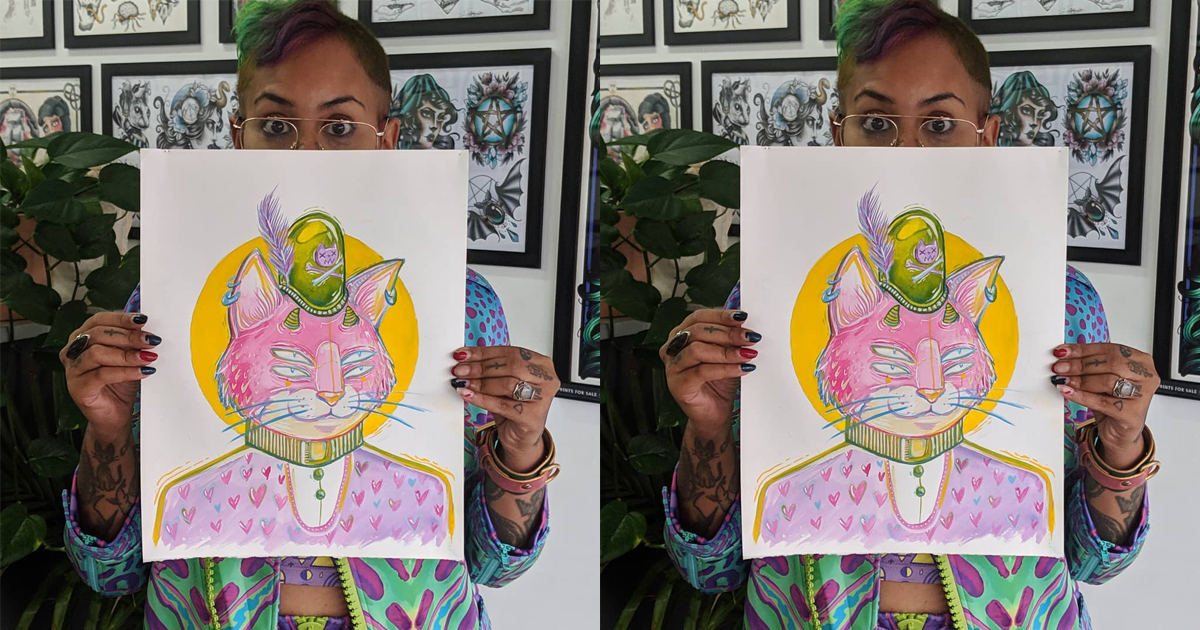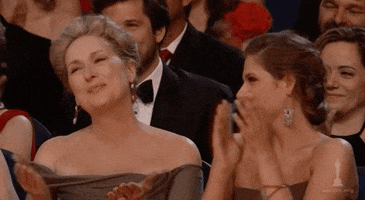
Opening up a conversation around mental health can be daunting. Fellow Gen Z’ers, let’s be real with ourselves – we are so used to hiding behind the facade of perfection, irony and meme-culture, that the thought of authentically showcasing how we’re really doing is often met with a bit of apprehension.
That’s where art comes into the equation a lot of the time, and thank heavens for that.

Art (in any form) has an incredible way of extracting and expressing intimate emotions and feelings, verbalising them in ways that help us. It’s where we go to feel less alone and make sense of ~this all~, making it an integral agent in helping us understand mental health.
According to a recent study conducted in June 2020 by Headspace, one in three young (34%) Australians reported high or very high levels of distress, in comparison to the reported 32% in 2018. It’s a saddening statistic and telling that young people are clearly in need of more support.
Headspace, along with nine national mental health organisations across the sector, have recently launched their ‘Visible‘ campaign, centred around the message of reducing stigma around mental health for young people by promoting healthy conversations around it. To do this, they’ve teamed up with a slew of incredibly talented Aussie artists to help this vision come to life too. Each artist has been paired to a young person with a history of mental health challenges, with the task of creating a piece of art based on their unique journey with mental health.
“My mental illness initially silenced me, so I wanted to use my nuanced, candid experiences of mental illness to plant seeds of change within the community,” said Josh Di Nucci, an advocate for this campaign, who has had their journey with OCD communicated through the artist they’ve been paired with.
“I may never see those seeds grow into forests, but I believe every life matters, everyone has a story, and every story has value.”
It’s honestly a great reminder that sometimes our feelings can be expressed in ways other than deep conversations – which can be super hard to navigate. Painting, writing, dancing and singing about what’s going on in your brain is a tried and true means of catharsis. Especially after this year, I think we could all agree that finding new ways to express yourself and channel low moods into something positive is a must for self-care.
Here’s what these young Aussie artists had to say about how creating has helped them cope with mental health, and how we can all help to reduce the stigma around the topic.
Nadia Milford, Dancer – Brisbane
View this post on Instagram
PTV: What made you want to get involved with Project Visible?
Nadia Milford: I saw an opportunity to work within a really unique collaborative process and send a meaningful and powerful message that could make a difference to people’s lives. I was also interested in learning more about mental health and thought this would be a great way to understand it a little deeper.
PTV: How has creating art helped you cope with challenges throughout life?
NM: Dance is my way of understanding the world. It gives me a voice to communicate and uniquely connect with others. I create when I have a question. So I use the creative process to explore ideas through each part of my self – body, mind and heart. By reflecting on my creative responses, I learn about myself and others.
PTV: How has 2020 impacted your creative process and the way you create?
NM: A lot of my practice has moved online. The challenges 2020 presents us globally has reinforced the importance of physical connection for a sense of belonging and connection. I’ve been considering how to create sensory experiences through a digital model, and this has involved working with film and new technology like extended reality. I’m questioning as we rapidly progress into this digital age, how can we maintain deep and authentic communication?
PTV: How has your perception of mental health changed over the years?
NM: I would say my understanding has evolved a lot, not only through working with Visible but helping friends go through certain experiences has made me much more aware of how important having a greater awareness of mental health is. I think recognising the diversity of people’s experiences and relationships to their mental health has been the biggest learning curve – one size does not fit all and keeping an open and receptive mind is important to create cohesive and healthy communities.
PTV: What stigmas do you believe still exist around mental health? What do you think can be done to reverse this?
NM: For people to seek the help they need or others to be able to give those support or understanding, we need to learn more about mental illness. For instance, OCD is not the quirky, cute trait depicted in movies; it is incredibly challenging to live with. We need this to be common knowledge.
We need more campaigns like Visible that access people’s emotions and communicate on a deeper and more empathetic level to understand the nuances of mental ill-health. By igniting people’s imaginations, I believe we can also inspire people to take the initiative themselves to learn more, and that’s the fastest way to create change.
Cynthia Sobraty, Visual Artist – Melbourne
View this post on Instagram
PTV: What made you want to get involved with Project Visible?
Cynthia Sobraty: I truly believe in the advocacy of mental health, and I enjoyed the format of collaboration proposed, of visual interpretation to give weight to the invisible.
PTV: How has creating art helped you cope with challenges throughout life?
CS: Drawing has been my best friend for as long as I can remember. It is my main means of escapism and processing. It has helped me dissociate from a reality that I do not always understand. I don’t know what I would have done without this skill.
PTV: How has 2020 impacted your creative process and the way you create?
CS: Because of COVID, I had to cease my usual occupation of tattooing, which allowed me a lot of space to see who I am as an artist outside all of these governing structures that take up my time and regulate me. It has led me to understand my ASD/ADHD traits much more intimately and how I can better optimise my life to work WITH my brain rather than against it. For this, I am very thankful.
PTV: How has your perception of mental health changed over the years?
CS: It has changed a lot. I have been diagnosed with various things throughout my life and have seen many sides of the medical industry. This has impacted my stance on mental health and how it is perceived. Ultimately, I think social media, for all its evils, has shed much more nuance to mental health, and I have learned a lot about other people’s experiences through this.
PTV: What stigmas do you believe still exist around mental health? What do you think can be done to reverse this?
CS: There is still a lot of stigma towards mental health, and people not wanting to associate with it. This othering means people are more deterred to be honest when they are feeling untoward themselves. I think this can be reversed by everyone being more honest about their internal landscapes and sharing the nuance of their experiences, and saying, “It’s okay to not be okay. These feelings are valid, and they exist, and that’s okay.”
Nick McGovern, Visual Artist – Melbourne
View this post on Instagram
PTV: What made you want to get involved with Project Visible?
Nick McGovern: The key mission of changing the way the country and the world views mental health is a message that immediately resonated with me. Having struggled with depression and anxiety for a number of years, I am very aware of how tough it can get dealing with these difficult experiences and the intense emotional baggage that we carry with us as a result. Being able to contribute as an artist to address the stigma associated with mental health issues, and to help tell these significant stories was an opportunity that I had to jump at.
PTV: How has creating art helped you cope with challenges throughout life?
NM: For a long time, I have benefitted from the therapeutic qualities of creating artwork. Setting aside some time to explore creativity and drawing in my sketchbook is always a great way to unwind after a stressful week. I also think that the beauty of art can move people and engage thought in ways that the written word is often not able to. Whenever I go to a gallery, show or see some inspiring artwork, it leaves me feeling creatively inspired and has the ability to uplift my mood completely.
PTV: How has 2020 impacted your creative process and the way you create?
NM: Moving from an office environment to working from home has provided some benefits from a creative side as well as some challenges. With my day-job workload slowing down at times, there has been some extra time to really sink my teeth into projects such as Visible and my ongoing work with Wave Above Sea Level.
There have also been some periods of lack of motivation and distraction that have been challenging at times. Sometimes just forcing yourself into creative work is the best way to break out of any slump you’re in. It’s also important not to be too hard on yourself in periods of creative downtime. It happens.
PTV: How has your perception of mental health changed over the years?
NM: Something I have realised over the years is that many people are affected by mental health issues and what they show the world and how they project themselves publicly is not always a true indication of what is happening inside.
The main thing I have realised is the importance of seeking help if you think you need it; there are services available such as therapy, which is something I have personally benefited from.
PTV: What stigmas do you believe still exist around mental health? What do you think can be done to reverse this?
NM: I think one of the main stigmas still associated with mental health, is that it is considered shameful to discuss issues you are having with friends, family and the people in your life. It is often viewed that sharing something personal and vulnerable will be considered weak or soft, particularly with young men.
When these experiences are shared, it is surprising how many people you open up to have felt similar sensations or been in similar positions. This is why opening up the discussion can be so important to realise there is hope and help out there for people who are suffering.



